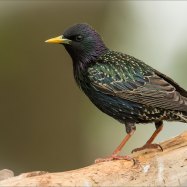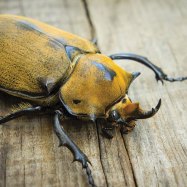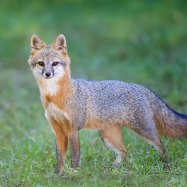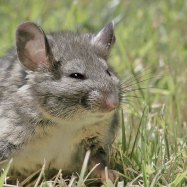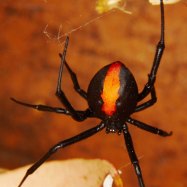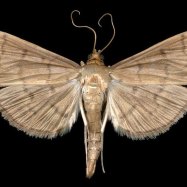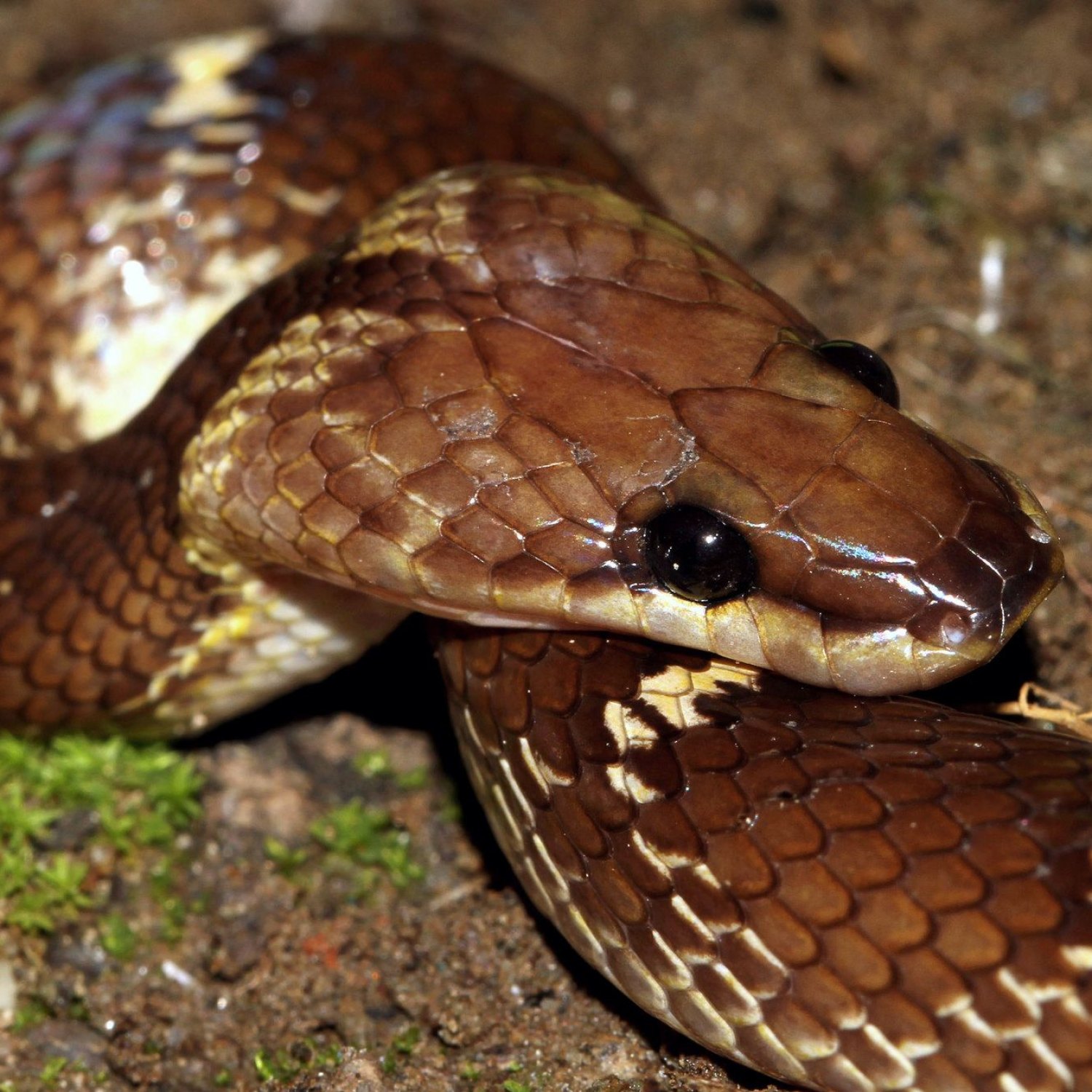
Wolf Snake
50-200 cm
Did you know that the Wolf Snake, found in South Asia, can grow up to a length of 50-200 cm? Belonging to the Colubridae family, this slender and elongated creature has adapted well to its environment. So next time you're in South Asia, keep an eye out for these intriguing animals! #WolfSnake #SouthAsia #Colubridae #Wildlife
Animal Details Summary:
Common Name: Wolf Snake
Kingdom: Animalia
Habitat: Tropical and subtropical forests, grasslands, agricultural areas
The Mysterious Wolf Snake
In the vast and diverse world of reptiles, there are countless species that often go unnoticed by the average person. One such creature is the Wolf Snake, a fascinating reptile that has captured the attention of scientists and enthusiasts alike. With its sleek and slender body and mysterious habits, the Wolf Snake is a truly unique and intriguing animal. Let's delve deeper into its story and uncover the secrets behind this enigmatic creature Wolf Snake.The Origins of the Wolf Snake
The Wolf Snake, also known by its scientific name Lycodon, belongs to the kingdom Animalia and the phylum Chordata. It is part of the reptilian class Reptilia and the order Squamata. Within the Squamata order, the Wolf Snake falls under the family Colubridae, which includes a wide variety of snakes known for their diverse habitats and feeding methods.The Wolf Snake's natural habitat is primarily found in tropical and subtropical forests, grasslands, and even agricultural areas. It is mainly found in Asia but has been recorded in other parts of the world as well. Its country of origin can be traced back to India, specifically found in South Asia.
Appearance and Physical Characteristics
The Wolf Snake is a visually striking reptile, with a dark and glossy body adorned with light or pale markings. Its body color can vary depending on its location, with some species having a reddish-brown hue while others have a grey or black coloration. Its body is slender and elongated, giving it a rather elegant appearance Willow Flycatcher.One of the most distinct physical features of the Wolf Snake is its round eyes, which are set apart from each other and give it a curious and intense look. It also has sharp teeth, which it uses for catching and consuming its prey. Its body length ranges from 50 to 200 cm, making it a relatively small snake compared to others in its family.
A Carnivorous Diet
As a member of the Colubridae family, the Wolf Snake is a carnivorous reptile. Its diet consists primarily of small vertebrates such as rodents, lizards, and small birds. It is also known to feed on eggs, which it swallows whole, crushing them with its powerful jaws. Despite its small size, the Wolf Snake is an efficient predator and can consume prey larger than its own body.One interesting fact about the Wolf Snake's feeding method is its ability to eat other snakes, including venomous ones. It is immune to the venom of many snake species, allowing it to have a diverse diet. This also serves as a defense mechanism, as other predators may think twice before attacking a snake that can eat their kind.
The Elusive Nature of the Wolf Snake
Despite its striking appearance and unique habits, the Wolf Snake is a relatively elusive creature. It is primarily nocturnal, meaning it is most active at night, making it challenging to spot. Additionally, its slim body and small size make it a master of camouflage, blending in with its surroundings and remaining unnoticed by potential predators.Another contributing factor to its elusive nature is its behavior. The Wolf Snake is a shy and docile creature, preferring to avoid confrontation. It also tends to hide in crevices or under rocks, making it even more challenging to spot in its natural habitat.
The Role of the Wolf Snake in its Ecosystem
Like all creatures, the Wolf Snake plays a crucial role in maintaining the balance of its ecosystem. As predators, Wolf Snakes help control the population of their prey species, preventing them from overpopulating. This, in turn, helps maintain the balance of the food chain, ensuring the survival of other animal species.Additionally, the Wolf Snake also serves as a food source for larger predators such as birds of prey and other snakes. Its presence in the ecosystem is vital for the overall health and stability of its environment.
Threats to the Wolf Snake
The Wolf Snake, like many other reptiles, faces several threats to its existence. One of the main threats is habitat loss due to deforestation and urbanization. As human populations grow and expand into previously untouched areas, the Wolf Snake's natural habitat is shrinking, leaving it with fewer places to thrive.Another major threat to the Wolf Snake is the illegal pet trade. Due to its striking appearance and unique nature, it is highly sought after by reptile enthusiasts and collectors. This creates a demand for the snake, leading to illegal capture and trade, which can harm its populations and the ecosystems it inhabits.
Conservation Efforts
Despite the threats it faces, there are several conservation efforts in place to protect the Wolf Snake and its habitat. In many countries, laws and regulations have been put in place to prevent the illegal trade and capture of these reptiles. Organizations focused on reptile conservation also work to educate the public and raise awareness about the importance of protecting these creatures.One way individuals can contribute to the conservation of the Wolf Snake is by avoiding purchasing them as pets. It is essential to avoid contributing to the illegal pet trade and instead encourage responsible pet ownership and awareness of the importance of preserving wild animals in their natural habitats.
Uncovering the Mysteries of the Wolf Snake
Despite its elusive nature, scientists and researchers continue to study and uncover the secrets of the Wolf Snake. One such study discovered that the wolf snake possesses an interesting adaptation to survive in its environment - keeled scales. These scales have small ridges on them, which help the snake move through grass and vegetation with ease, without getting tangled or caught.Another recent study looked into the biogeography of the Wolf Snake, exploring the various factors that have led to its distribution across its natural range. By studying the historical and current distribution of the species, scientists hope to learn more about how it has adapted and evolved to survive in different environments.
Conclusion
The Wolf Snake may not be the most well-known reptile in the world, but it is undoubtedly a fascinating and remarkable creature. From its unique appearance to its elusive and mysterious nature, it has captured the interest and curiosity of many. Through conservation efforts and continued research, we can ensure that this elusive reptile remains a symbol of the diverse and captivating world of animals.

Wolf Snake
Animal Details Wolf Snake - Scientific Name: Lycodon
- Category: Animals W
- Scientific Name: Lycodon
- Common Name: Wolf Snake
- Kingdom: Animalia
- Phylum: Chordata
- Class: Reptilia
- Order: Squamata
- Family: Colubridae
- Habitat: Tropical and subtropical forests, grasslands, agricultural areas
- Feeding Method: Carnivorous
- Geographical Distribution: Asia
- Country of Origin: India
- Location: South Asia
- Animal Coloration: Varies, but generally dark with light or pale markings
- Body Shape: Slender and elongated
- Length: 50-200 cm
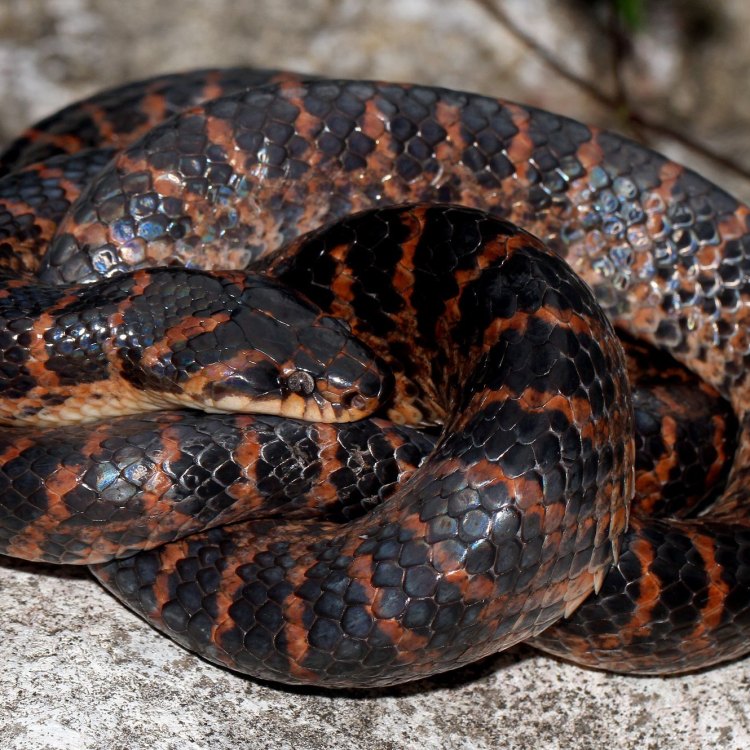
Wolf Snake
- Adult Size: 80-150 cm
- Average Lifespan: 10-15 years
- Reproduction: Oviparous (egg-laying)
- Reproductive Behavior: Mates during the spring or summer
- Sound or Call: Most species of wolf snakes do not make any sound
- Migration Pattern: Most species are non-migratory
- Social Groups: Generally solitary
- Behavior: Nocturnal and secretive
- Threats: Habitat loss, fragmentation, and degradation; agricultural expansion; illegal pet trade; persecution
- Conservation Status: Varies by species, but many are classified as Least Concern
- Impact on Ecosystem: As predators, they help control populations of small mammals, reptiles, and amphibians
- Human Use: Some are kept as pets
- Distinctive Features: Narrow head, round pupils, smooth scales
- Interesting Facts: Wolf snakes are non-venomous and harmless to humans
- Predator: Birds of prey, larger snakes, mammals
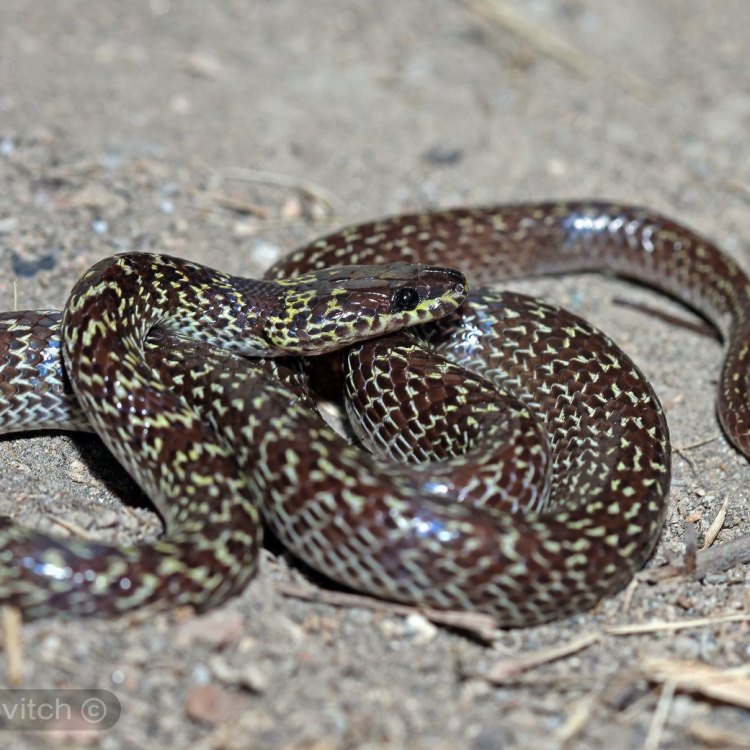
Lycodon
The Fascinating World of Wolf Snakes: Exploring the Unique Characteristics and Importance of These Serpents
When thinking of snakes, many people immediately conjure up images of fierce and deadly creatures, slithering through the wilderness. However, not all snakes fit this stereotype, and the wolf snake is a perfect example. With its narrow head, round pupils, and smooth scales, this serpent may not look intimidating, but don't let its appearance fool you. In this article, we will delve into the world of wolf snakes, exploring their distinctive features and behaviors, their role in the ecosystem, and their relationship with humans PeaceOfAnimals.Com.The Basics: Size, Lifespan, and Reproduction
Wolf snakes, also known as big-eyed snakes, are a group of non-venomous reptiles belonging to the family Colubridae. They are found in various parts of the world, including Southeast Asia, India, and parts of Africa. As their name suggests, wolf snakes have a slender and elongated body, reaching an adult size of 80-150 cm. However, there is some variation in size depending on the species, with some reaching lengths of up to 2 meters.
In the wild, these serpents have an average lifespan of 10-15 years, with some individuals living even longer in captivity. As oviparous reptiles, they lay eggs instead of giving birth to live young. Most species mate during the spring or summer months, and after a period of incubation, the female lays about 3-15 eggs. The hatchlings are then left to fend for themselves, as wolf snakes do not provide any parental care.
Reproductive Behavior and Communication
During the breeding season, male wolf snakes become more active and will engage in courtship rituals to attract a female Whoodle. These rituals can involve multiple males pursuing a single female, sometimes resulting in intense competition. Once a male has successfully mated with a female, she will store the sperm and use it to fertilize her eggs when suitable environmental conditions arise.
Unlike some snake species that use pheromones to communicate, most wolf snakes do not produce any sound or call. Instead, they rely on visual cues and body postures to communicate with other snakes. This behavior is common among non-venomous snakes, who do not have the same need to warn potential predators.
Nocturnal and Solitary Creatures
Wolf snakes are generally solitary creatures, preferring to hunt and live alone. They are nocturnal, meaning they are most active at night and spend their days resting in burrows or under rocks. Being secretive by nature, these serpents have excellent camouflage, blending in with their surroundings to avoid detection.
As predators, wolf snakes primarily consume small mammals, reptiles, and amphibians. They are constrictors, meaning they use their bodies to squeeze and suffocate their prey before devouring it whole. Their diet plays a crucial role in regulating the populations of these smaller animals, helping to maintain a balance in the ecosystem.
Threats and Conservation Status
Unfortunately, like many other species of snakes, wolf snakes face numerous threats in the wild. One of the main threats is habitat loss, fragmentation, and degradation due to human activities such as land development and agriculture. As human populations continue to grow, the natural habitats of these snakes are being destroyed, leaving them with less space to live and hunt.
Another significant threat to wolf snakes is the illegal pet trade, where they are captured and sold as exotic pets. This not only causes harm to the individual snakes but also impacts their populations in the wild. In some cultures, these serpents are also persecuted and killed because of superstitions and misconceptions about their behavior.
The conservation status of wolf snakes varies depending on the species. While some are considered Least Concern by the International Union for Conservation of Nature (IUCN), others are listed as Vulnerable or Endangered. The continued efforts of conservationists and researchers are crucial to protect this species and their habitats from further decline.
The Role of Wolf Snakes in the Ecosystem
As mentioned earlier, wolf snakes play an essential role in controlling populations of small mammals, reptiles, and amphibians. Without their presence, these prey species can multiply rapidly, leading to imbalances in the ecosystem. Furthermore, these snakes also serve as food for larger predators, including birds of prey and larger snake species, contributing to the food chain's stability.
In addition to their ecological importance, wolf snakes also have economic value. In India, where these snakes are common, they are considered beneficial to farmers as they help control rodent populations, which can cause damage to crops. Therefore, they indirectly contribute to human food security and economic sustainability.
Human Interaction and Preservation of Wolf Snakes
As with most wild animals, it is best to avoid direct contact with wolf snakes to prevent any potential harm to both the snake and the human. If encountering one in the wild, it is crucial to keep a safe distance and admire these creatures from afar. In some areas, it is illegal to capture or harm wolf snakes, so it is important to follow local laws and regulations.
On the other hand, some people do choose to keep wolf snakes as pets. While these serpents may not be as popular as other snake species, they are still sought after for their unique appearance and relatively docile nature. However, it is essential to keep in mind that these snakes require specific care and husbandry, and inexperienced owners should not attempt to keep them as pets.
Distinctive Features and Interesting Facts
One of the most prominent and unique features of wolf snakes is their narrow head, which sets them apart from other members of the Colubridae family. This characteristic gives them a wolf-like appearance, hence their name. Additionally, they have round pupils, unlike other snake species that often have vertical, slit-like pupils. Finally, their smooth scales give them a glossy appearance, making them even more striking to look at.
Despite their intimidating appearance, wolf snakes are harmless to humans. They are non-venomous, which means their bite does not pose any significant threat. They are also quite shy and will rarely bite unless provoked or threatened. However, it is always advisable to exercise caution when approaching any wild animal, as they may act unpredictably.
In Conclusion
In conclusion, wolf snakes may not be the most well-known or talked-about creatures, but they are undoubtedly fascinating and hold great ecological importance. From their distinctive features to their solitary and nocturnal behavior, these serpents have evolved to thrive in their natural habitats. However, as with many other species, their survival is threatened by human activities, calling for urgent conservation efforts to protect them.
So, the next time you come across a wolf snake, take a moment to appreciate these incredible creatures and their role in maintaining balance in the ecosystem. And remember, there's more to these big-eyed snakes than meets the eye.
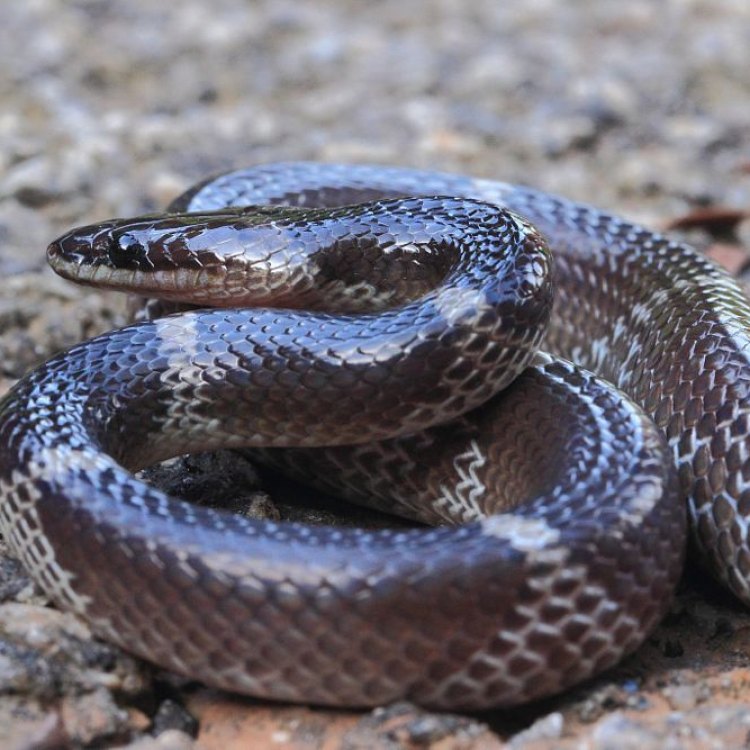
The Mysterious Wolf Snake
Disclaimer: The content provided is for informational purposes only. We cannot guarantee the accuracy of the information on this page 100%. All information provided here may change without prior notice.




